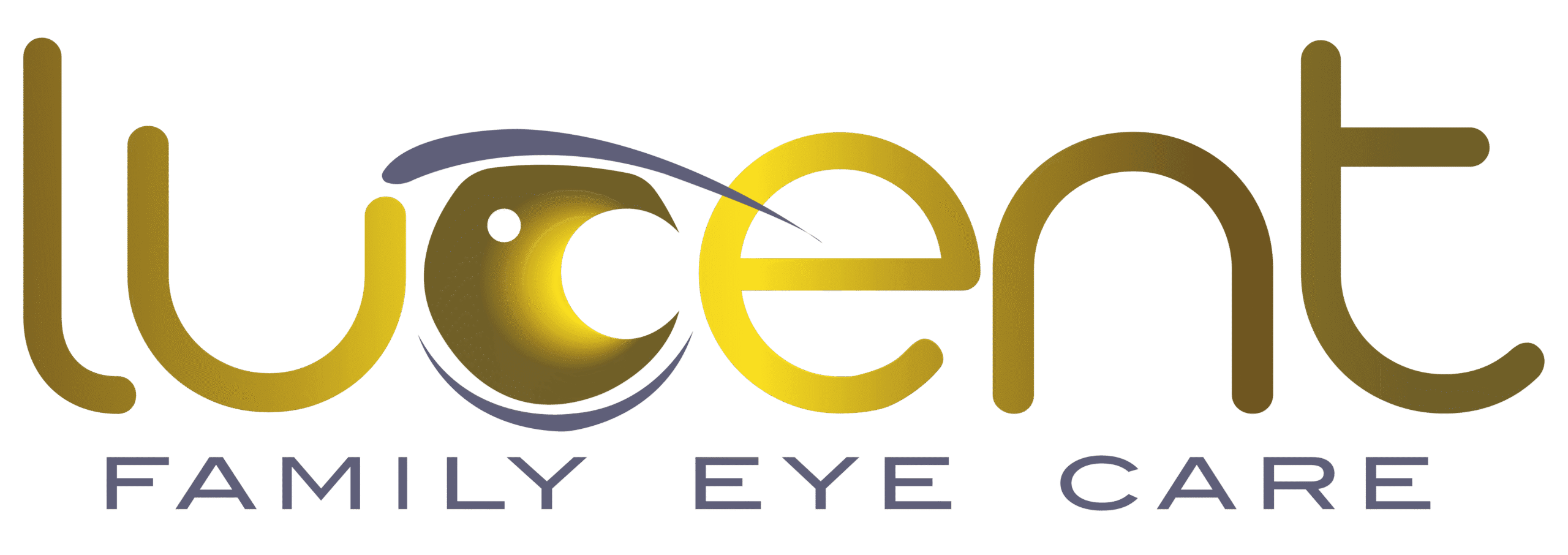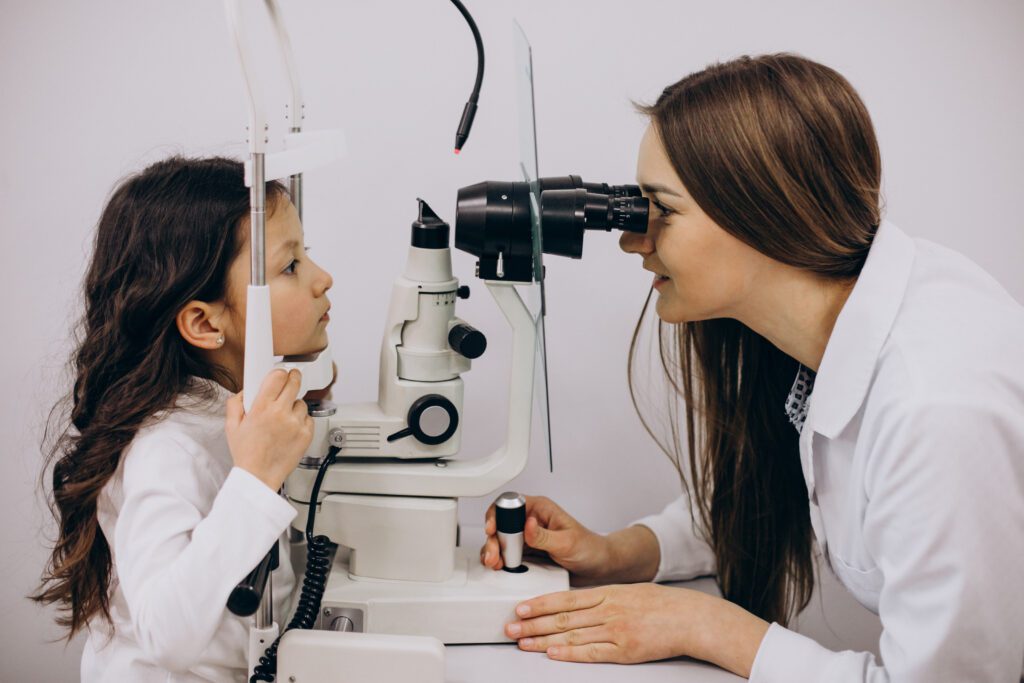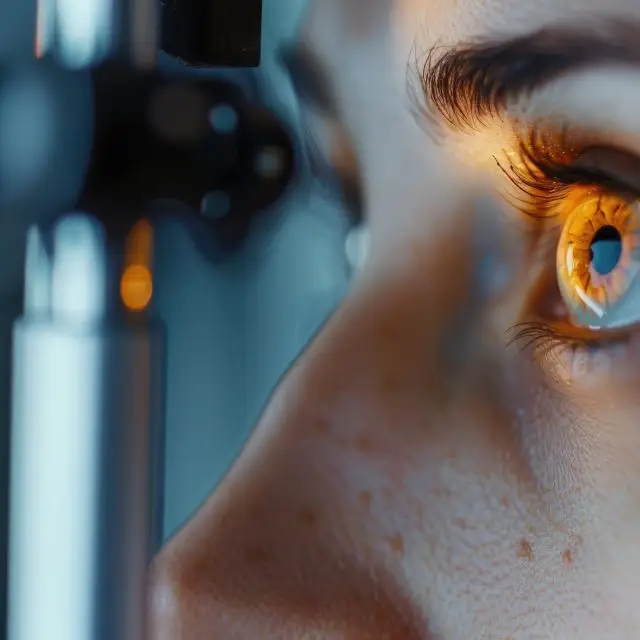
Close

Myopia is more than a minor inconvenience—it can significantly impact your child’s long-term vision. As myopia progresses during childhood, the risk of developing serious eye conditions such as retinal detachment, macular degeneration, glaucoma, and cataracts increases. Fortunately, Myopia Management can help reduce these risks.
Myopia Management solutions, including specialized soft contact lenses, specialized spectacle lenses, orthokeratology, and low-dose atropine eye drops, are designed to slow the progression of myopia and help preserve your child’s vision. Contact the Myopia Management Center at Lucent Family Eye Care to learn how we can help your child achieve clearer vision and a better quality of life.
However, myopia is more than an inconvenience; it can pose a serious risk to your child’s long-term vision. As a child develops and the myopia rapidly progresses, the child is at a higher risk of developing dangerous eye diseases later in life. Namely, retinal detachment, macular degeneration, glaucoma and cataracts. Thankfully, Myopia Management can help.
Myopia Management solutions include eye drops, specific contact lenses, and glasses, which can help slow down the rapid visual deterioration that occurs with myopia. Contact The Myopia Management Center at Lucent Family Eye Care and see how Myopia Management can help your child experience clearer, sharper vision and a higher quality of life.
Myopia, or nearsightedness, occurs when the eye grows too long from front to back, causing light to focus in front of the retina instead of directly on it. This results in distant objects appearing blurry, while close objects remain clear.
Myopia often begins in childhood, typically between ages 6 and 13, and tends to progress most rapidly during the years of early eye growth—especially between ages 7 and 10. The condition may continue to worsen throughout the teenage years before stabilizing in late adolescence. Early onset of myopia is associated with a higher risk of developing high myopia later in life.
While corrective glasses or contact lenses can provide clear vision, proactive myopia management is important to help slow progression and reduce the risk of future complications




Myopia is reaching epidemic levels worldwide. Recent research from the Brien Holden Vision Institute warns that nearly 30% of the global population is already affected by myopia—and this number is climbing fast. By 2050, almost half of the world’s population—an estimated 5 billion people—could be living with nearsightedness!
The surge is especially dramatic among children and young adults in East Asia. In China, only 10–20% of primary school children are myopic, but this skyrockets to 50% in high school and an astonishing 90% by university age. Without intervention, these numbers will continue to rise.
This crisis demands action. Fortunately, myopia management can help protect your child from joining these statistics. Early intervention is critical—don’t wait to safeguard your child’s vision and long-term eye health.
Myopia is on the rise, with an estimated 5 billion people (half the global population) expected to be myopic by 2050. This is a staggering number! Not only is myopia inconvenient, but it can also lead to a host of severe sight-robbing eye diseases, such as macular degeneration, glaucoma, cataracts and retinal detachment.
Since kids have been spending more and more time in front of screens and less time outdoors, we’ve been seeing a dramatic rise in the number of patients developing myopia (nearsightedness), as well rapid increases in eyeglass prescriptions.




Myopia is caused by the elongation of axial length of the eyeball. However, research shows that axial length of the eyeball is affected by the position of an image projected in relation to the retina. So when the position of the projected image is located continuously in front of the retina, the axial length tends to become shorter. This indicates that projecting images in front and on the retina at the same time can control axial growth and myopia progression.
MiyoSmart with D.I.M.S. technology is a single vision corrective lens with a convex surface that is made up of hundreds of small segments, each providing myopic defocus.This lens structure makes it possible to simultaneously slow the growth of the eyeball and provide clear vision.
To learn more about MiyoSmart Lenses, contact Dr. Yee today.


There are several ways to manage myopia (nearsightedness), but are they appropriate for children with dry eye syndrome? In most cases, the answer is ‘yes.’


As a parent of a nearsighted child, you can be proactive about preserving your child’s eye health and vision. Read on to learn about myopia management, and whether your child could be a candidate.


Orthokeratology, also known as “ortho-k”, is a safe and effective method of correcting vision while slowing the progression of myopia in children. If you are the parent of a nearsighted child, learn how ortho-k can also help preserve your child’s eye health.


A comprehensive explanation of the mechanics of ortho-k.


Atropine therapy are prescription eye drops that have been shown to stop or slow down the progression of myopia (nearsightedness).